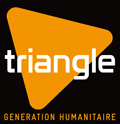AREA OF EXPERTISE

Education and protection

AREA OF EXPERTISE

Education and protection
FUNDING
Humanitarian Fund
To date, the Ouaka Prefecture remains one of the areas most affected by the violence caused by the crisis that has been affecting the Central African Republic (CAR) since 2012. After a period of calm in early 2016 following the election of the new President Touadéra, tensions between armed groups resumed, and massive population displacements were observed, specifically towards the Bambari sites. Between December 2017 and January 2018, the Commission on Population Movement (CMP) identified 5,013 new displaced persons, for a total of 91,451 displaced persons in the prefecture (61,055 on sites and 30,396 with host families).
Such a security context does not allow displaced populations to begin a process to return to their home villages. The sites shelter populations present since their creation (during 2014), but also populations that have arrived following repeated crises in the prefecture or neighbouring prefectures. More recently, following the conflicts around the town of Ippy, the town of Séko suffered the arrival of several thousand displaced people, spread over two reception sites: in April 2018, the Séko church site counted 4,526 people, and the Séko health centre site 2,053.
The presence of these displaced populations has had a significant impact on the functioning of the prefecture's education system. Schools - already weakened by repeated crises - did not have the means to welcome these new pupils, which considerably altered the already extremely modest quality of education. Yet, in order to avoid these children becoming a ‘lost generation’, it is crucial that they be given the chance of an education.
TGH has been working in displaced people's sites in Bambari since 2014, and its teams are able to understand the situation of children affected by this crisis, in particular the repercussions on their education. Following on from previous programmes which have improved teaching conditions (school renovation, furniture construction) and strengthened the educational environment (distribution of kits, training of teaching staff, awareness-raising campaign, etc.), this new intervention is setting up emergency education schemes such as ETAPE (Temporary Learning and Child Protection Areas) in Séko.
Finally, TGH has established an emergency contingency stockpile for education, which will enable it to respond quickly to the educational needs of children in the event of a mass influx of displaced persons.